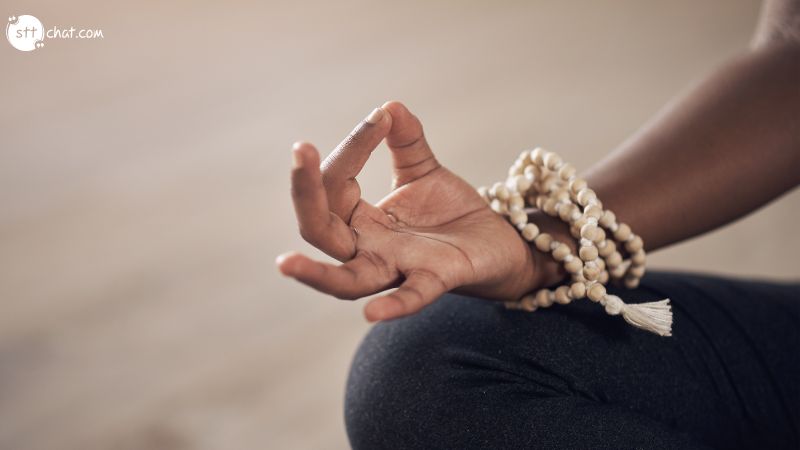The profound wisdom of Buddha has inspired countless individuals seeking tranquility and enlightenment. Among his many teachings, one quote stands out for its timeless relevance: "Peace comes from within. Do not seek it without." This simple yet powerful statement encapsulates the essence of inner peace and highlights the futility of searching for it in external circumstances.
1. The Essence of Inner Peace
At the heart of Buddha's quote lies the concept that true peace is an internal state of being. It is not dependent on external factors or conditions but originates from within ourselves. This idea challenges the common misconception that peace and happiness can be found in material possessions, social status, or external achievements.
1.1 The Illusion of External Peace
Many people spend their lives chasing after external sources of peace, believing that acquiring wealth, power, or recognition will bring them the serenity they desire. However, this pursuit often leads to disappointment and dissatisfaction. External conditions are inherently transient and subject to change, making them unreliable foundations for lasting peace. By seeking peace from within, we tap into a stable and enduring source of tranquility that is not easily shaken by external events.
1.2 The Power of Self-Reflection
Self-reflection is a crucial practice in cultivating inner peace. By turning our attention inward, we can gain insight into our thoughts, emotions, and behaviors. This introspective process allows us to identify and address the root causes of our inner turmoil. Meditation, journaling, and mindfulness exercises are effective tools for self-reflection, helping us to cultivate a deeper understanding of ourselves and foster a sense of inner calm.

The Essence of Inner Peace. Source: Internet
2. The Role of Mindfulness
Mindfulness, the practice of being fully present in the moment, is closely linked to the cultivation of inner peace. By focusing our attention on the here and now, we can break free from the anxieties and regrets that often plague our minds. Mindfulness encourages us to embrace each moment with acceptance and non-judgment, allowing us to experience life more fully and peacefully.
2.1 Techniques for Mindfulness
There are several techniques we can use to practice mindfulness in our daily lives. Deep breathing exercises, for instance, can help us anchor our attention to the present moment. Taking a few slow, deliberate breaths can calm the mind and reduce stress. Additionally, mindful walking, where we pay attention to each step and the sensations in our body, can also foster a sense of presence and tranquility.
2.2 The Impact of Gratitude
Gratitude is another powerful practice that can enhance our sense of inner peace. By focusing on the positive aspects of our lives and expressing appreciation for what we have, we can shift our perspective from a mindset of lack to one of abundance. Keeping a gratitude journal, where we regularly jot down things we are thankful for, can help reinforce this positive outlook and contribute to our overall well-being.
3. The Influence of Thoughts and Beliefs
Our thoughts and beliefs play a significant role in shaping our inner state of peace. Negative thought patterns and limiting beliefs can create mental and emotional turbulence, hindering our ability to experience tranquility. By cultivating positive and empowering thoughts, we can create a more peaceful inner environment.
3.1 Challenging Negative Thoughts
One effective way to address negative thoughts is through cognitive restructuring. This involves identifying negative thought patterns and challenging their validity. For example, if we find ourselves thinking, "I am not good enough," we can question the evidence for this belief and replace it with a more positive affirmation, such as "I am capable and worthy." Over time, this practice can help rewire our thinking and promote a more peaceful mindset.
3.2 Embracing Forgiveness
Forgiveness is another essential component of inner peace. Holding onto grudges and resentment can create emotional and mental distress. By choosing to forgive others and ourselves, we release the burden of negative emotions and create space for peace to flourish. Forgiveness does not mean condoning harmful behavior, but rather it is a conscious decision to let go of the past and move forward with compassion and understanding.
4. The Connection Between Inner Peace and Ou
While the quote "Peace comes from within. Do not seek it without" emphasizes the internal nature of peace, it is important to recognize that inner peace can positively influence our external environment. When we cultivate tranquility within ourselves, we are better equipped to navigate external challenges with grace and composure.
4.1 Creating a Peaceful Environment
Our physical surroundings can have a significant impact on our inner state of being. Creating a peaceful environment, whether at home or work, can support our efforts to maintain inner peace. This might involve decluttering our space, incorporating calming elements such as plants or soothing colors, and establishing a quiet area for relaxation and reflection.
4.2 Spreading Peace to Others
When we embody inner peace, we can also inspire and uplift those around us. Our calm and composed demeanor can have a ripple effect, fostering a more harmonious and positive atmosphere in our relationships and communities. Acts of kindness, empathy, and compassion can further enhance this effect, contributing to a collective sense of peace and well-being.

Peace can positively influence our external environment. Source: Internet
5. Practical Steps to Cultivate Inner Peace
To cultivate inner peace, we can incorporate several practical steps into our daily lives. These strategies can help us nurture a sense of tranquility and resilience, regardless of external circumstances.
5.1 Daily Meditation
Daily meditation is a powerful practice for cultivating inner peace. Setting aside even a few minutes each day to sit quietly and focus on our breath can help calm the mind and reduce stress. There are various meditation techniques to explore, including guided meditations, mantra repetition, and loving-kindness meditation.
5.2 Establishing Healthy Boundaries
Establishing healthy boundaries is crucial for maintaining inner peace. This involves recognizing our limits and communicating them clearly to others. By protecting our time and energy, we can prevent burnout and create space for self-care and reflection.
5.3 Engaging in Creative Activities
Engaging in creative activities, such as painting, writing, or playing music, can also promote inner peace. These activities allow us to express ourselves and connect with our inner world, providing a sense of fulfillment and joy.
Conclusion
The quote "Peace comes from within. Do not seek it without" offers timeless wisdom that is highly relevant in today's fast-paced and often chaotic world. By focusing on cultivating inner peace through self-reflection, mindfulness, positive thinking, and healthy boundaries, we can create a stable and enduring sense of tranquility. This inner peace not only enhances our own well-being but also has the potential to inspire and uplift those around us. Embracing this wisdom can lead to a more harmonious and fulfilling life, where peace truly comes from within.






